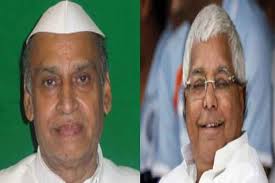
According to a study by the NGO, of these MPs, 18 are from the Bharatiya Janata Party while the Congress has 14, Samajwadi Party (eight), Bahujan Samaj Party (six), AIADMK (four), Janata Dal-United (three) and Communist Party of India-Marxist (two). The remaining 17 belong to smaller parties.
The issue has come into focus after a Delhi court convicted Congress MP Rashid Masood in the MBBS scam case and a Central Bureau of Investigation court in Ranchi Monday convicted Rashtriya Janata Dal chief Lalu Prasad in the multi-crore fodder scam case.
Masood had fraudulently nominated undeserving candidates to the MBBS seats allotted to Tripura medical colleges from the central pool. The fodder scam involved the embezzlement from the government treasury in Bihar.
One reason for the low rate of conviction is the excruciatingly slow pace at which hearings of cases proceed in courts, said the NGO working for transparency in politics.
ADR said that an analysis of the elections (including 2009 Lok Sabha and assembly polls since 2008) of the 4,807 elected members (MPs and state legislators), 1,460 (30 percent) have declared criminal cases against them.
Of these, 688 (14 percent) face serious criminal cases.
It further said not all convictions lead to disqualification of sitting MPs or state legislators but only those related to the cases registered under violations mentioned in section 8(1), 8(2) and 8(3) as per the July 10 Supreme Court judgment.





Comments
Add new comment